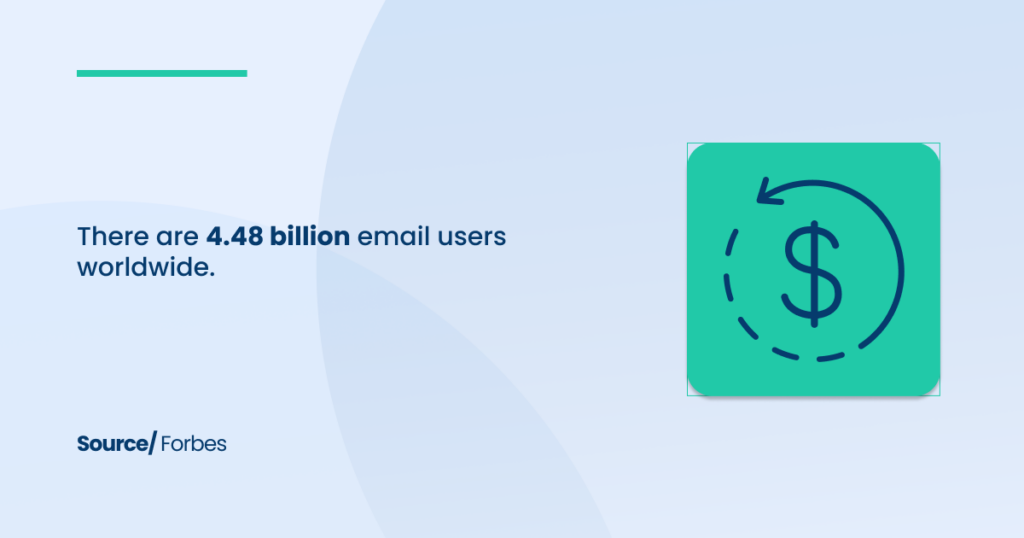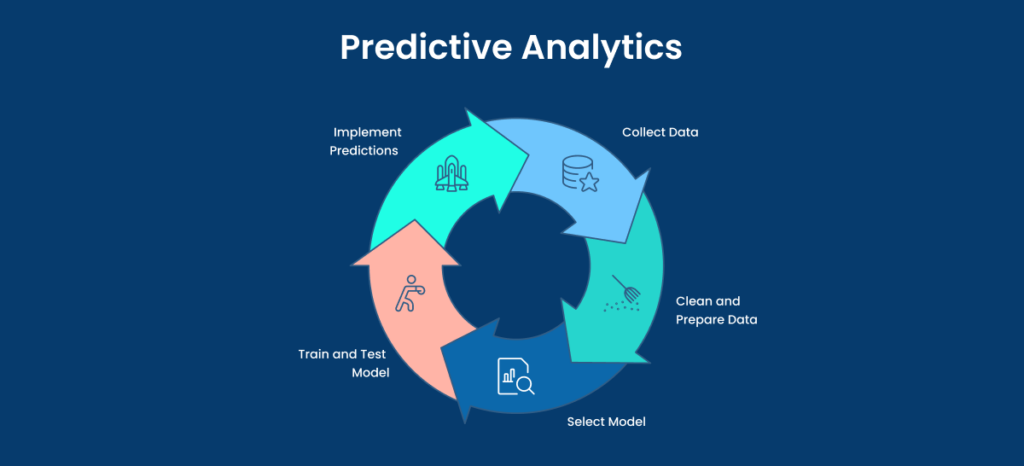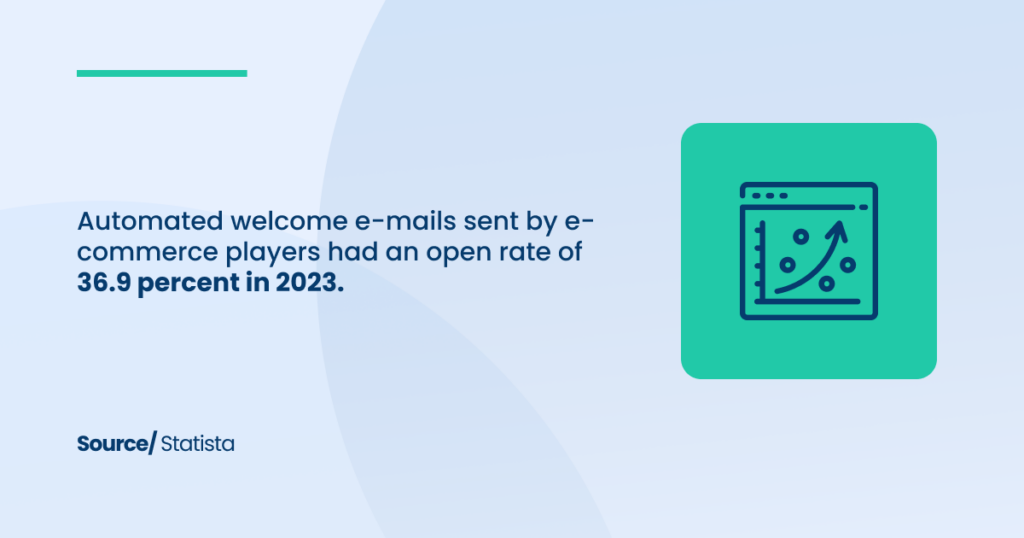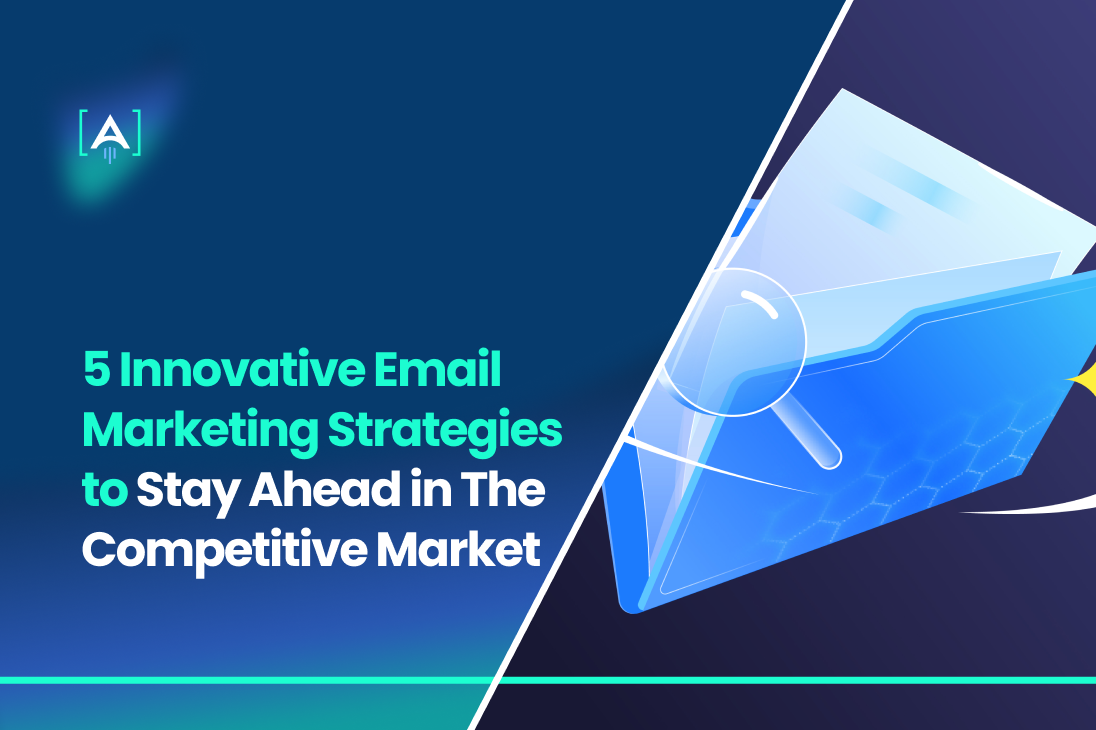Do you know that more than 347 billion emails are sent and received daily?
Yes, that is the reality. Email marketing is still a powerful tool.
But to stand out, you need more than just a mailing list and a catchy subject line.
What else do you need? Email marketing strategies will help you stay ahead in the competitive market.

With 4.48 billion users globally, the reach is immense. Analysts predict this number will continue to grow, reaching 4.59 billion in 2025.
For businesses, this means an even bigger audience at your fingertips. The professional Email Marketing Agency will help you fight this massive reach, turning every inbox into an opportunity for meaningful engagement and business growth.
Until you decide which service you need, the article will show you 5 Innovative Email Marketing Strategies for great success.
1. Cracking the Code of Personalization: Why Your Emails Should Speak Directly to Your Audience
In today’s world of content overload, every inbox is flooded with promotional emails, newsletters, and updates.
For business owners and CEOs, it’s a challenge to break through that clutter and get their message noticed. This is where personalized email marketing comes into play.
It’s not just a strategy. It’s a must-have to remain relevant and drive engagement.
Source: Mc Kinsey Report
Why Personalization is Essential
Personalized emails are more than just adding the recipient’s name at the top. It’s about understanding who your customers are, what they’ve done in the past, and what they are likely to do next.
By addressing their unique needs, past behavior, and preferences, you’re not just sending out a generic message—you’re creating a conversation tailored to the individual.
1. Understanding Your Customer’s Journey
Every customer has a different path to purchase, known as the email customer journey. Some might interact with your brand frequently, while others may need nurturing. Using data from email analytics, you can track the stage of the journey each customer is in. From there, tailor messages accordingly:
- First-time visitor? Offer them a welcome discount.
- Long-time customer? Share exclusive rewards or new product updates.
By creating personalized emails based on this journey, CEOs can ensure they’re sending the right message at the right time. In fact, research shows that personalized emails deliver 6x higher transaction rates than non-personalized ones.
2. Leveraging Past Behavior to Shape Future Emails
One of the best email marketing strategies for CEOs is to leverage customer data. What did the recipient purchase last time? Which products did they browse but not buy? AI email marketing tools can now help gather and analyze this data to craft messages that resonate.
For example:
- A customer who browsed a product but didn’t purchase it might receive a follow-up email with a special offer or a reminder that their favorite item is still available.
- For customers who have made a purchase, send them a personalized thank-you email and recommend related products they may be interested in.
Using AI-powered analytics makes it easier to create hyper-personalized messages. These aren’t just emails—they’re curated experiences based on a user’s preferences and behavior.
3. Timeliness: Reaching the Right Audience at the Right Time
Timing plays a significant role in email marketing strategies. CEOs should ensure they’re sending personalized emails at the optimal time for each recipient. With AI-driven tools, you can now predict when an individual is most likely to check their email and schedule messages accordingly.
For example:
- Customers who engage more frequently in the evening might receive emails during their peak engagement hours.
- AI email marketing systems can track when a recipient last opened or clicked an email and suggest the best time to follow up.
This ensures that your personalized email is not only relevant but also delivered at the perfect moment. The outcome? Higher open rates, more clicks, and increased conversions.
Personalization Beyond Just Names: Crafting Value-Based Messages
While adding the recipient’s name or greeting in the subject line is a good start, personalization should go beyond that.
Source: The CMO
CEOs must focus on delivering value-based content that directly addresses their customer’s challenges and pain points.
For example:
- Use email analytics to understand which content resonates most with your audience and send them more of it.
- Craft offers that are tailored to specific needs, such as discounts for frequent buyers or educational content for those in the research phase.
By making each interaction meaningful, you can ensure your emails are seen as valuable, not just promotional.
2. From Data to Strategy: How AI Can Transform Your Email Campaigns
Artificial intelligence (AI) is no longer just a buzzword—it’s a game changer for email marketing strategies.
Business owners and CEOs need to harness AI’s capabilities to stay competitive. Whether it’s automating tedious tasks or crafting personalized customer journeys, AI is the secret weapon for more efficient, data-driven email marketing.
Source: Exploding Topics
What AI Does for Email Marketing: Beyond Automation
Artificial intelligence doesn’t just take over basic tasks—it supercharges email marketing by diving deep into customer data and transforming it into actionable insights.
AI tools are used in the best email marketing strategies because they allow you to:
- Automate audience segmentation: Instead of manually sorting your audience based on interests or behaviors, AI can automatically segment your list into highly targeted groups. This enables you to send the right message to the right people without wasting time on trial and error.
- Predict customer behavior: AI can analyze historical data and predict what your customers are likely to do next. Are they on the verge of making a purchase? AI can help identify those ready-to-buy signals, making it easier to send personalized offers at just the right time.
- Optimize content: From subject lines to CTAs, AI can help determine which content resonates best with your audience. By analyzing past performance, AI tools can recommend tweaks and improvements that are proven to boost engagement and conversion rates.
For ecommerce email marketing, AI is invaluable. It can recommend products based on browsing history or previous purchases, resulting in emails that feel personal and relevant.
For CEOs, this means less time spent on guesswork and more time focusing on strategy.
The Power of Predictive Analytics
What if you could anticipate what your customer needs before they even ask for it?
That’s where AI-powered predictive analytics comes in. This AI tool can analyze data from past behaviors to predict future actions, giving you a competitive edge when it comes to email marketing strategies.

Let’s say a customer frequently buys products during the holiday season.
AI can flag this pattern and help you send targeted offers before the season even starts, positioning your brand as proactive. Predictive analytics can also determine the likelihood of someone making a purchase based on their interactions with your brand, allowing you to focus on leads that are most likely to convert.
3. Beyond Metrics: Understanding the Power of Email Automation in Scaling Your Business
Keeping up with the demands of communication can feel overwhelming.
Yet, the solution is simple: email automation.
By leveraging automation, businesses can streamline their customer communications, whether it’s onboarding new customers, following up on abandoned carts, or nurturing long-term leads.

Why Timing is Everything: Onboarding New Customers
Automation shines in onboarding processes. When a new customer subscribes, purchases a product, or engages with your content, an automated email can welcome them, provide relevant information, or encourage further interaction.
Customer onboarding can often be the make-or-break moment for customer retention.
Automating the process ensures every new customer gets the same personalized and engaging introduction to your business. This consistent onboarding nurtures leads into paying customers without extra manpower, ensuring no opportunity slips through the cracks.
- Key Stat: According to Campaign Monitor, automated welcome emails generate up to 320% more revenue per email than non-automated messages.
Moving the Needle: Following Up on Abandoned Carts
Cart abandonment is a common challenge for ecommerce businesses. Without automation, manually following up on every abandoned cart is time-consuming and inefficient.
However, an automated email sequence can encourage potential customers to complete their purchases. These emails can include personalized discounts or reminders of what they left behind, significantly boosting conversion rates.
Why It Matters for CEOs: An automated follow-up system for abandoned carts recaptures lost sales that might otherwise be forgotten.
For CEOs, this means boosting revenue without increasing operational costs. The best email marketing strategies leverage automation to address common customer pain points at key moments in their purchasing journey.
4. Interactive Emails: Engaging Your Audience in Ways You Haven’t Tried Yet
The need to stand out has never been more urgent. Email marketers have long relied on subject lines and compelling content to catch attention.
But now, interactive emails lead the charge, offering a fresh way to captivate recipients and drive engagement. Gone are the days when emails were passive, one-way communications.
Why Interactive Emails Are a Game-Changer
Interactive emails introduce dynamic elements like polls, surveys, quizzes, and clickable elements that invite your audience to engage directly with your content without leaving their inbox.
These features make your emails more engaging and offer a more personalized experience—something today’s consumers crave.
Think about it this way: you’re no longer just telling your customers something; you’re inviting them to participate.
What Makes Interactive Emails So Effective?
Interactive emails bring an active component to an otherwise static medium, encouraging users to interact and engage.
This engagement boosts essential email marketing metrics like open rates, click-through rates, and, more importantly, conversion rates.
- Higher Engagement: Interactive emails capture attention and hold it. For example, emails with interactive elements can boost click rates by up to 300% (Campaign Monitor).
- Data Collection: Polls, surveys, and quizzes offer an easy way to gather customer feedback and insights, helping you tailor future campaigns with data-driven precision.
- Enhanced Personalization: Interactive elements can create a personalized email customer journey, adapting content based on user responses. This not only makes each email feel custom-made for the recipient but also improves email deliverability by ensuring your messages are relevant and engaging, which in turn has been shown to increase email marketing ROI.
5. Trigger-Based Campaigns: Reaching the Right Customer at the Perfect Moment
Timing is everything in marketing, and trigger-based email campaigns are designed to hit the inbox exactly when your customer is most likely to engage.
Source: Mailmodo
Types of Trigger-Based Emails That Deliver Results
Trigger-based emails come in many forms, and choosing the right type depends on your industry, business model, and customer journey.
- Re-Engagement Emails: Wake Up Dormant Leads
For B2B email marketing, customers can sometimes go cold. But that doesn’t mean they’re lost forever.
Triggering a re-engagement email after a period of inactivity—say 30 or 60 days—can reignite interest and bring them back into the fold. Whether it’s offering an incentive to re-engage or simply checking in, re-engagement emails are highly effective for reminding customers of your value.
Pro tip: Use email marketing metrics to identify when a customer last interacted with your brand. A well-timed nudge can get them back on track.
- Abandoned Cart Emails: Sealing the Deal
In ecommerce email marketing, abandoned cart emails are gold. Research shows that 69.57% of shopping carts are abandoned before a purchase is made (Baymard Institute).
Triggering an email to remind the customer of their left-behind items can recover a significant portion of lost sales.
- Purchase Follow-Ups: Deepen the Relationship
After a customer makes a purchase, it’s the perfect moment to send a follow-up email thanking them for their order and offering complementary products. This strategy works well in both B2B and ecommerce email marketing environments. It’s an easy way to create a repeat customer and keep your brand at the top of your mind.
Purchase follow-ups can also include requests for reviews or feedback, which further deepens the relationship while providing valuable insights for your business.
- Welcome Emails: The First Impression Matters
When a customer signs up for your newsletter, service, or account, the welcome email is your first chance to make a strong impression. Automating this email ensures that every new customer gets a personalized and warm introduction to your brand.
A well-crafted welcome email can showcase your services, while in B2B email marketing, it can offer helpful resources or guides, setting the tone for future interactions.
- Upsell and Cross-Sell Emails: Maximizing Customer Value
After a purchase, sending targeted upsell or cross-sell emails based on the customer’s buying history can significantly increase the lifetime value of that customer. For example, if someone bought a phone, a trigger-based email offering accessories or upgrades a few weeks later can drive additional revenue.
Making Trigger-Based Campaigns Work for You
Trigger-based campaigns are a cornerstone of the best email marketing strategies today.
Whether you’re the CEO of a growing B2B business or managing a robust ecommerce operation, automating emails based on customer behavior is essential for staying relevant and driving action.
With the help of AI email marketing tools, you can scale your efforts while delivering personalized, timely messages that convert.
In the End? Which Email Marketing Strategy Suits Your Business Best?
Take this quick quiz to discover the email marketing strategy that will give your business the competitive edge it needs!
Simply answer these five questions, and we’ll reveal the best approach for you.
- What’s your primary goal with email marketing?
- Increase customer engagement
- Drive more conversions
- Re-engage inactive subscribers
- Automate follow-ups
- What describes your current email list?
- Highly segmented and personalized
- Mostly generic with little segmentation
- We’re still building it
- Focused on specific customer behaviors
- How often do you currently send out email campaigns?
- Weekly
- Monthly
- Sporadically
- We don’t have a set schedule
- Do you use AI tools or automation in your email strategy?
- Yes, fully integrated
- We’re exploring it
- Not yet, but we’re interested
- No, it’s not part of our plan yet
- What would you most like to improve in your email marketing efforts?
- Personalization
- Open and click-through rates
- Conversion rates
- Efficiency with Automation
Great! You did your best.
Now it is the time to analyze your answers.
[A] Growth Agency will be your analyst. Our experienced team will explain your quiz results and craft a tailored strategy to drive engagement, optimize automation, and deliver real, measurable growth.
We specialize in turning entrepreneurial dreams into reality with effective, tailored growth strategies.
Growth isn’t just what we offer. It’s who we are.
One more thing: We believe in the power of data to inform and drive every strategy, ensuring our actions are as effective as they are innovative.
What should you do?
Get Your Free Marketing Plan

